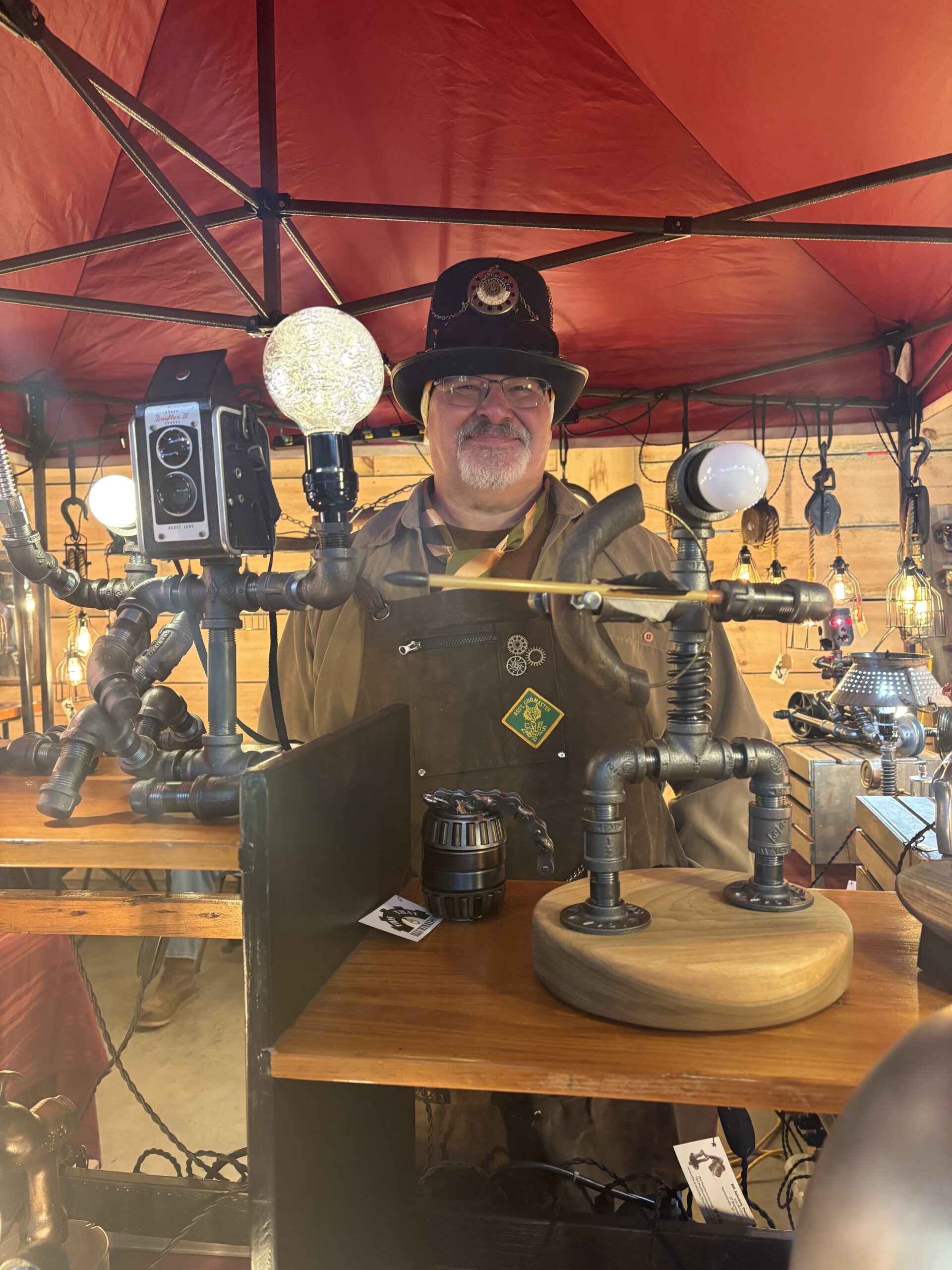“Steampunk IS Victorian Science Fiction” – our friend G.D. Falksen.
Are you looking for the one, singular, exact, helpful, perfect answer to the question “What Is Steampunk?”
Try some reputable sources. Here is the definition of the great Watch City Steampunk Festival, which we designed. Here’s one from the Ministry of Steampunk on What is Steampunk?
We have the BEST ANSWER EVER: Adjust your top-hat to a jaunty angle and NEVER WORRY ABOUT IT AGAIN. Only YOU get to define YOUR imaginary 19th century.
In other words…
We’re reasonably happy to let your Steampunk be pretty much whatever you feel it is. It’s not such a large or such a complicated scene that we think we need to enforce a specific number of goggles, gears, glasses, or gorgonzola cheese. (We prefer Stilton.)
But if you’d like some ABSOLUTELY AWFUL ANSWERS to the question of “What Is Steampunk”…we’re glad to oblige.
Because The Steampunk World’s Fair is a helper.
- Steampunk is an attempt by the imaginary 19th century to help all of those who are forced to live in the entirely real world. It can only work if you pay loooots of money to Steampunk events. Trust us. And tip your bartender.
- Steampunk is a failed Victorian exercise trend. In 1876, a group of overly enthusiastic gym instructors decided that steam engines were the key to fitness. They built treadmills powered by coal and kettles, with brass levers you had to crank while wearing a top hat. (Thus, the requirement that all “Steampunks” purchase at least one $25,000 custom top-hat.)
The workout, called “Steam-Sweat,” promised to make you as strong as a locomotive but mostly just left people smelling like soot and tangled in suspenders. Steampunk is the lingering memory of this sweaty, clanky disaster, celebrated by people who still think lifting a pocket watch counts as cardio. - It’s a fashion line for overly dramatic accountants.* A Villainous Consortiom of Victorian Ledge-keepers who got bored balancing ledgers and decided to spice up their wardrobe with gears, goggles, and way too many vests. Steampunk was their attempt to look like they were solving crimes on a zeppelin instead of adding up tea imports. The trend flopped when clients realized the goggles were useless for reading fine print, but Steampunk lives on as a style for anyone who wants to look like they’re auditing a time machine.
(“Madame! That time machine is dangerously unstable!”
“You should meet my ex-husband!”) - Steampunk is a cooking show gone wrong. In the 1890s, a chef named Gordon Ramshackle tried to pitch a TV show (via daguerrotupe) where every dish was cooked with a steam-powered stove shaped like a train. The food tasted like coal dust, and the studio filled with so much steam that the audience needed umbrellas. Steampunk is the culinary legacy of his signature dish, “Boiled Gear Pudding With Brass Garnish, Served Steaming Hot And On Fire,” which nobody ate but everyone wore as a hat to be polite.
- It’s a school club for kids obsessed with old clocks. Steampunk started when a group of 19th-century schoolchildren decided winding pocket watches was cooler than playing tag. They formed a club called “The Order of the Rusty Cog,” where they wore monocles, traded brass screws, and pretended their lunchboxes were steam-powered adventure kits. The club disbanded when they realized clocks don’t actually run on steam, but Steampunk stuck around as their awkward attempt at being the coolest kids in 1882.
- Steampunk is a board game nobody understands. Invented by a bored Victorian toymaker, Steampunk was a game where players pretended to be steam-engine mechanics competing to build the shiniest boiler. The rulebook was 400 pages long, required a working knowledge of thermodynamics, and came with a pair of decorative goggles nobody needed. Players quit after three hours of arguing over whether a “brass widget” trumped a “copper sprocket.” Steampunk is now the term for anyone still trying to finish that game in their attic.
- It’s a gardening technique for people who hate plants. Steampunk began when a group of Victorian gardeners decided watering cans were too basic and started using steam-powered hoses to mist their roses. The flowers all wilted under the heat, but the gardeners doubled down, claiming their “steamy aesthetic” was the future of horticulture. They wore leather gloves and top hats while pruning, and Steampunk is their legacy of perfectly trimmed hedges that smell faintly of engine oil.
* This applies solely to 19th century accountants. 20th century accountants are cool.

